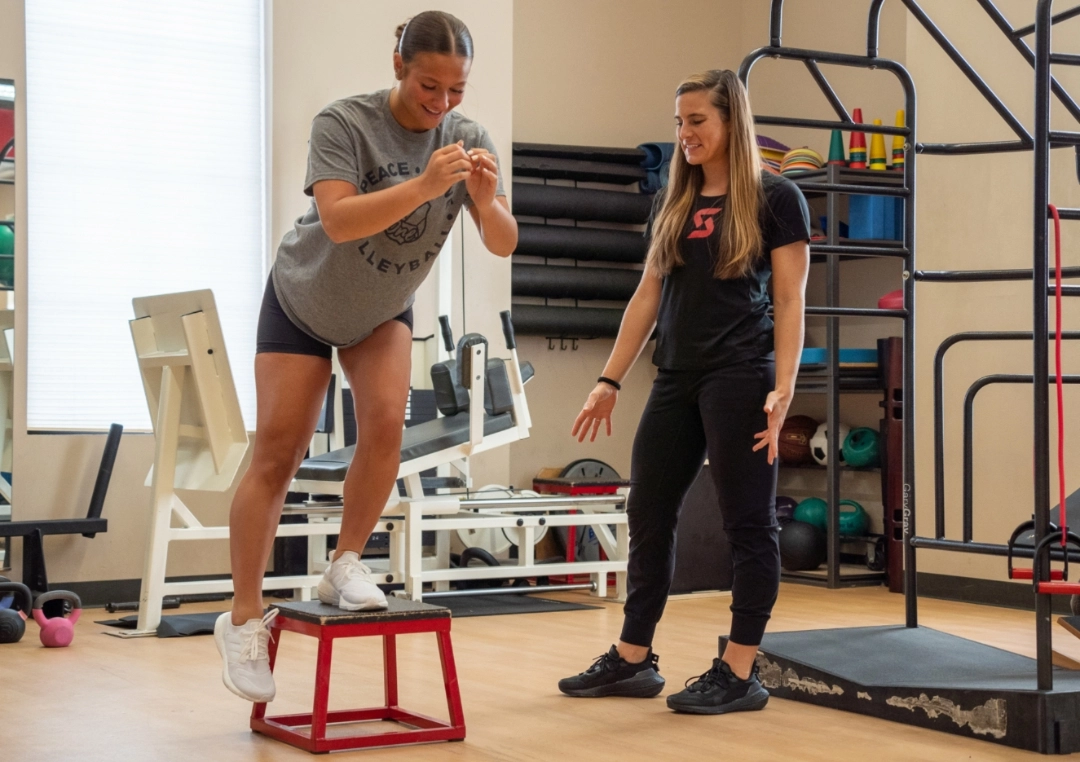One of the most common injuries to occur in volleyball are ankle sprains. If you look at a single volleyball team, it’s likely that you’ll see many of the athletes with ankle braces either being worn to try and prevent an injury or to help stabilize the ankle post-injury.
Why does this occur?
Ankle Sprains and Volleyball
Volleyball is an incredibly fast-paced sport that requires quick decisions, changes in direction, jumping, and immense teamwork to score. Miscommunication, a quick cut to change direction, or landing poorly after jumping to hit could result in an ankle sprain.
There are many situations that can lead to a sprained ankle, but cutting and landing from a jump is often how ankle sprains occur in volleyball. The athlete may be unable to maintain their stability when a great deal of load is applied to their ankle, which can cause their ankle to “roll.” Typically, the ankle rolls inwards, which can lead to a sprain of the outer ankle ligaments- including the anterior talofibular ligament, calcaneofibular ligament, and/or posterior talofibular ligament. Occasionally, the ankle will roll outwards, which can sprain the deltoid ligaments on the inside of the ankle.
The root cause of this instability can vary but could be caused by weakness or even poor control in the hip or the core. You might be thinking, “how do my hips and core affect my ankle?” Think of the body as a chain. One part of that chain can greatly impact another part, such as the hip affecting what happens in your knees and ankles. So, if control and stability is lacking in your hips and core, you are more prone to ankle and other lower extremity injuries.
The Role and Limits of an Ankle Brace
Playing through pain is common. However, continuing to aggravate an injury can lead to chronic symptoms that take longer to heal, cause secondary injuries due to compensations, and require more aggressive treatments. We understand athletes don’t want to be taken out of their sport, and it is never our goal to remove you unless it is absolutely necessary. That is why early intervention is so important. As physical therapists, we are on your team to properly rehabilitate your ankle injury, so you can perform your best while reducing the risk of secondary injury.
You may be prescribed an ankle brace to help stabilize your joint and the surrounding musculature for your sport. This is so your ankle is not over-stressed or over-stretched in certain areas that need to remain protected to heal properly.
Over time, with physical therapy, your ankle will be reeducated and prepared to tolerate multidirectional and unpredictable loads. At this point, a brace will no longer be necessary and may actually hinder your healing process. This happens because, when we wear a brace, our joint gets stability from the brace, so the muscles and joints can’t react and strengthen to the loads that occur during sport or therapy. The ankle isn’t able to relearn proper sports specific movements and reduces your entire body’s ability to react while on the court.
Physical Therapy for Sports Specific Injuries
Physical therapy can help you safely heal from your ankle sprain on and off the court. While, no injury is completely preventable or guaranteed never to happen, with proper performance and prevention training, these injuries can be greatly reduced. As physical therapists, we gradually, and in a controlled manner, expose the body to sports specific movements and activities in order to prepare it for the sport. We even expose your ankle to a greater load than what is normally seen in sport, which improves your tissue’s tolerance to this load. This can significantly reduce the risk of injury during the sport itself.
You can seek out physical therapy for your sport before you experience an injury. Physical therapists are movement experts who can give you a performance plan to help you move and feel your best on the court. Schedule an appointment today!

